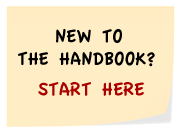Warning: file_get_contents(): php_network_getaddresses: getaddrinfo failed: Name or service not known in /www/htdocs/w00e5436/Handbook/wp-content/plugins/digg-digg/include/dd-class.php on line 1202
Warning: file_get_contents(http://feeds.delicious.com/v2/json/urlinfo/data?url=http%3A%2F%2Fhandbookofawesome.com%2F2012%2F01%2Fnapping%2F): failed to open stream: php_network_getaddresses: getaddrinfo failed: Name or service not known in /www/htdocs/w00e5436/Handbook/wp-content/plugins/digg-digg/include/dd-class.php on line 1202
“I usually take a two hour nap from one to four.” (Yogi Berra)

What is the connection between the following famous people: Salvador Dali, Napoleon Bonaparte, John F. Kennedy, Albert Einstein, Winston Churchill and Thomas Edison? – They were all fervent defenders of the daytime nap!
From an evolutionary perspective, it’s easy to see why our natural rhythm is to sleep during the night and be active during the day. Back in the stone-age many dangers lay in the darkness, so it made sense to lay low and only venture out for food during the day. Nowadays with the help of artificial light we can stay active as late as we like: fluorescent lights and laptop screens must have our brains totally confused as to what time of day it is. Maybe in a few hundred millennia our need for sleep will even be totally gone, and we can finally live the consulting dream: working 24 hours a day, every day!
The question is, does it still make sense to sleep only at night? In Spain and many Latin American countries, the norm is to take a siesta in the afternoon heat. As you can see from the aforementioned list of people, naps obviously do not hold you back either (they didn’t stop Napoleon from conquering half of Europe). So what’s the deal here? According to studies by e.g. NASA and the National Institute of Mental Health a power nap of less than 30 minutes produces heightened attention, better short term-memory and results in fewer errors in task completion. In addition to these clear benefits, the nap is in no means wasted time, as you will often find it translates into needing less sleep during the night. Since most of us typically feel a little tired after lunch, (a phenomenon known as “Postprandial somnolence” if you’re trying to impress someone), the best time for a nap is typically in the early afternoon, which actually is common knowledge among older folk.
A few simple steps you can take:
- If you’re working from home, this is a no-brainer: After lunch, set a timer for 20-30 minutes and take a nap on e.g. your sofa. Make sure you don’t go over this time-limit as you will then enter deeper phases of sleep and wake up groggy probably wondering what the hell happened.
- If you’re at the office, you may need to do some preparatory evangelist-work about napping. After all, if they catch you snoozing at your desk, your colleagues’ first thoughts are unlikely to be “I see a productivity boost is underway, marvelous!” Thankfully, most everyone these days has at least heard some rumor as to the benefits of napping. If not, feel free to direct them to e.g. this post!
- If you’re lucky, your office might even have a designated room for napping (and our grandfathers call today’s young people soft). Make use of it! Otherwise, you will have to learn the demanding art of desk napping, which poorly executed can result in a reverse keyboard being printed on your forehead and emails asking you to clarify what you meant with six pages of “ddddddddddddddddddddddddddd…”.
A few tweaks you can consider:
- The caffeine power nap: Combines the refreshing characteristics of a nap and a cup of coffee! You chug a cup right before your nap and wake up 20-30 minutes later right as the caffeine is beginning to take effect.
- The Salvador Dali key nap: The master of the surreal used to advocate this technique, where you nap in a sitting position while holding a key gently between your fingers. As you begin to doze, your muscles relax and the key clatters onto the ground, waking you. Supposedly, this allows you to channel the inspiration and innate creativity of dreams into the waking world. Great if you’re looking to add a surrealist edge to your PowerPoint-presentation!









